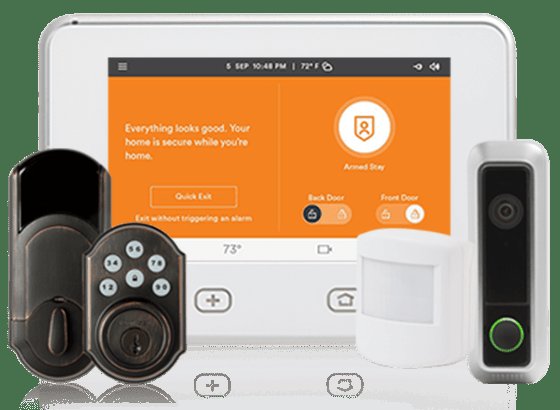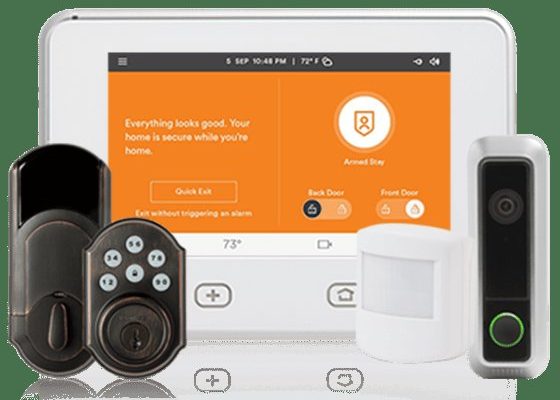
Think of your Vivint system like a nervous guard dog that watches over everything: doors, windows, even the garage. Now imagine if that guard dog needed a vet, but the bill was way higher than you planned. That’s basically where extended warranties come in. Are they your peace of mind, or just another money pit? Let’s break it down in plain English and figure out if an extended warranty is actually worth it for your Vivint security setup.
What Does a Vivint Extended Warranty Actually Cover?
A lot of people get hung up on this part, and honestly, I don’t blame them. The words “extended warranty” sound simple but can hide a whole world of fine print. For Vivint security systems, the standard warranty usually provides coverage for defective parts and hardware problems for a set period (typically 120 days to a year, depending on how you bought the system). If something fails due to a manufacturer’s fault, they’ll repair or replace it.
The Vivint extended warranty—sometimes called a Service Plan—picks up where that original coverage stops. It generally promises to:
- Repair or replace faulty cameras, control panels, door sensors, and smart locks as long as you pay for the plan.
- Offer ongoing technical support for troubleshooting code errors, battery replacements, and even help resetting or syncing your remote devices.
- Include service calls and sometimes cover technician labor costs, which can get surprisingly pricey if you’re out of warranty.
That might sound like a lot, but always double-check the small print. Accidental damage, DIY installation mistakes, power surges, and cosmetic issues are usually left out. So if your toddler hurls a toy at the panel or you fry a wire during a home project, you’ll probably be paying out of pocket.
How Much Does Vivint’s Extended Warranty Cost?
Money talks, and let’s be real: the price might be the main thing on your mind. Vivint’s extended warranty is often sold as part of a monthly service plan—not as a one-time add-on. You might see a line item called “Premium Service Plan” or something similar on your bill. This fee generally ranges from $5 to $15 a month, depending on your setup and where you live.
Let me explain what you’re getting for those extra dollars each month. For that fee, you get ongoing coverage for any eligible part of your system—a camera, panel, sensor, or smart thermostat, for example. If something fails because of normal use, you call Vivint, and they’ll repair or swap it out. If you have technical issues, they’ll guide you through troubleshooting over the phone or send a tech out if a reset or pairing doesn’t fix the problem.
But here’s the thing: those monthly fees add up. Over five years, you could easily pay $300–$900 in warranty costs. So it’s smart to weigh that against the chances something will actually go wrong. In other words, are you likely to need repairs that would cost more than you pay for the warranty? Or are you basically betting on peace of mind?
Common Problems Vivint Users Face (and Warranty Impacts)
You might be wondering, “How often do these systems even break?” The answer: it depends, but most Vivint customers report their hardware is generally reliable. That said, no tech is invincible. Here are the trouble spots people run into—and where an extended warranty might step in:
- Battery failures: Door sensors, motion detectors, and remotes run on button batteries that can die out sooner than expected. Warranties often cover manufacturer defects but not regular battery swaps.
- Code errors: Sometimes, panels throw cryptic error codes when something’s out of sync, like after a power outage or failed software update. Vivint support can usually walk you through a reset, but if hardware is the issue, warranty coverage helps.
- Camera or panel malfunctions: Security cameras or touchscreens can fail without warning. Without a warranty, a replacement can cost $100–$300 or more.
- Pairing or connectivity problems: Remote devices losing their link to the hub is surprisingly common, especially after battery changes or home Wi-Fi updates. Most of the time, you’ll just need a quick troubleshooting session, but physical defects sometimes require a replacement.
So yes, stuff does break, especially in homes with rowdy pets, curious kids, or lots of tech upgrades. If you’re not the DIY type, those support calls and service visits start to look more appealing with a warranty in place.
What Happens When You Don’t Buy the Extended Warranty?
Let’s say you skip the extended warranty. Here’s what you’re signing up for. Once your standard Vivint warranty ends, any repairs or replacements are entirely on you. That means:
- Paying full price for any broken cameras, sensors, control panels, or remotes—no discounts, no free swaps.
- Getting charged for every service call or technician visit. Even a quick reset or troubleshooting session can cost extra.
- Navigating code errors, pairing woes, or battery mysteries on your own (or with limited phone support).
Some folks are totally comfortable with this. If you’re tech-savvy, enjoy a bit of troubleshooting, and don’t mind DIY repairs, skipping the warranty could save you money in the long run. But if you’d rather not mess with hardware, or if the thought of a dead panel in the middle of the night gives you hives, well… the warranty starts to sound a lot more reasonable.
If you’re buying peace of mind, the warranty price isn’t just about dollars—it’s about skipping the stress.
Who Should Consider the Vivint Extended Warranty?
Here’s where things get personal. Not everyone needs the same level of coverage. You might be a natural tinkerer, or you might hate the idea of ever getting your hands dirty behind a wall panel. So, who really benefits from an extended warranty for Vivint security systems?
- Tech-averse users: If you cringe at the thought of troubleshooting, code errors, or battery changes, get the warranty. Vivint’s phone support and tech visit options can save you endless headaches.
- Homes with lots of devices: The more sensors, cameras, and remotes you’ve got, the higher the odds that something will need service. More moving parts equals more points of failure—plain and simple.
- People in harsh environments: If your area sees wild temperature swings, humidity, or frequent power outages, your hardware is under extra stress and more likely to fail.
- Anyone who values convenience above all: Sometimes, you just want someone else to deal with problems. The warranty is basically an “easy button” for your whole system.
That being said, if you’re handy, have a simpler setup, or just prefer to roll the dice, you could skip the warranty and only pay for repairs if—and when—they happen.
Comparing Vivint’s Warranty to DIY Security Systems
It’s worth thinking about how Vivint’s extended coverage stacks up against the competition, especially if you’ve ever considered a DIY security brand like Ring or SimpliSafe. With those, you typically buy hardware upfront, and the standard warranty ranges from one to three years. Some brands let you buy an extended warranty, but it’s usually a one-time charge rather than a monthly fee.
Here’s a quick breakdown:
| Vivint | Monthly extended warranty fee, covers most repairs and service visits as long as you keep paying. Usually requires professional installation. Premium support included. |
| DIY Brands | Standard warranty typically 1–3 years. Some offer paid extensions, but after that, you’re on your own. Support is phone- or chat-based, and you handle all repairs yourself. |
With Vivint, the main selling point is “never worry about service”—but you’ll pay for the privilege. With DIY brands, you save money but need to be comfortable syncing, pairing, resetting, and troubleshooting everything solo.
Is It Cheaper To Pay For Individual Repairs Instead?
You might be the kind of person who likes to run the numbers (I am). Let’s say you skip the warranty and just deal with repairs as they come up. A technician visit for a sensor replacement might cost $100–$200. A new camera could be $150–$300. If you’re lucky and nothing breaks for three years, you paid zero in warranty costs and pocketed the savings.
But, here’s the catch: It’s a gamble. If you’re unlucky and have two major failures back-to-back, you might wish you’d just paid the monthly fee for coverage. It’s like skipping car insurance—fine until something goes wrong.
I’ve seen families spend years without needing a single service call. Others, especially with more complicated systems or rougher living conditions (think: basements that flood, power surges, or frequent Wi-Fi resets), rack up repair costs quickly. So, it comes down to your appetite for risk and your luck with electronics.
Final Thoughts: Should You Get Vivint’s Extended Warranty?
Honestly, there’s no one-size-fits-all answer here. If the idea of a broken security panel, a dead camera, or a mystery code error makes you anxious, the monthly cost of a Vivint extended warranty is probably worth it. It smooths out unexpected costs and keeps your security system running without you ever having to mess with code resets, battery swaps, or troubleshooting confusing error messages.
But if you’re comfortable with the occasional repair bill and like the idea of saving money up front, you could skip the warranty and cross your fingers. Just keep in mind: Vivint hardware isn’t the cheapest to replace, and service calls add up fast. Whatever you decide, knowing exactly what’s covered—plus what’s not—puts you in the driver’s seat, instead of getting blindsided by a surprise bill or system outage at the worst possible time.
That’s what it really comes down to: balancing your need for peace of mind against the real-world risks of hardware failure. Make the call that fits your lifestyle, and you’ll be better prepared—no matter what curveballs your Vivint system throws your way.
